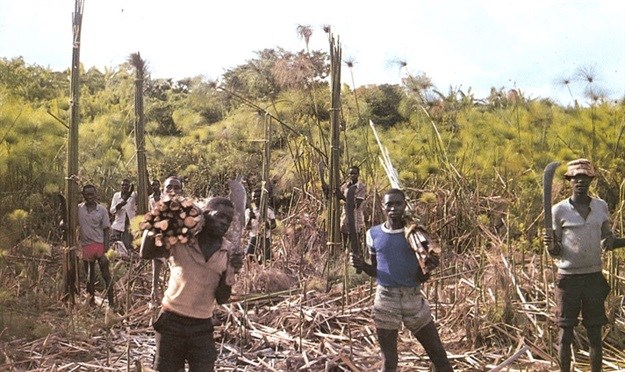
Top stories


Marketing & MediaCammy Msimango on finding her footing in South Africa’s fast-moving digital newsroom
Esther Tomorrow, MDNTV 20 hours




More news




Wood is the main source of domestic energy for rural populations while charcoal is the major source in urban areas. But the capacity of biomass to provide the energy requirements of sub-Saharan tropical Africa is declining. This is problematic because the numbers that depend on it are growing as populations increase.
By 2040 there will be an estimated 40% increase in the demand for biofuels. This will increase the pressure on forest biomass stocks in particular. It has long been recognised that this supply of wood is not sustainable and its continued use is leading to the destruction of natural woodlands and scrublands and a catastrophic loss of biodiversity. It has been predicted that the current rate of fuel wood consumption could exhaust resources within the next decade or two so there’s an urgent need to find alternative sources of biofuel.
One of the, as yet, untapped sources of biofuel is the prolific vegetation that grows in wetlands which cover approximately 6% of sub-Saharan Africa. Many of the wetlands are covered by papyrus vegetation that’s been shown to have record-breaking growth rates. Harvesting this papyrus as a renewable source of energy has the potential to alleviate pressures on native forest ecosystems which currently act as the main source of fuel sub-Saharan Africa.
The ideal plant used for fuel grows fast, can be harvested easily and then will regrow quickly. Fast growth depends on using the light available for photosynthesis as efficiently as possible and some plants are 30-40% more efficient than others. We now know that one of these ‘super-efficient’ plants is papyrus which was extensively cultivated in Africa throughout history, most famously to make paper in ancient Egypt.
Today, papyrus has largely disappeared from Egypt but it remains the dominant plant in wetlands in the Nile basin. These wetlands stretch from the source of the White Nile in Lake Victoria and passes through Uganda, South Sudan, Sudan into Egypt.
Papyrus grows quickly and its high biomass can be put to a number of uses. It is usually harvested by hand and stacked for partial air drying before it is used. It’s then used to make furniture, mats and baskets. But currently no market for it’s use as biofuel has been developed.

There are a number of reasons for this, the most significant being that papyrus needs to be converted into a suitable combustible form before it can be used as a biofuel. Papyrus stems aren’t dense enough to burn directly in stoves so they need to be densified or converted into charcoal.
Trials to compress the papyrus into briquettes have been carried out in Rwanda. The briquettes were manufactured in a single piston press as a long cylinder with a diameter of 6 cm. A pilot factory was established near Kigali, in the early 1980s but it was never developed into a commercial operation, possibly because not enough effort was made to develop a market for the briquettes.
More recently innovation in producing charcoal briquettes from papyrus has been developed by Massachusetts Institute of Technology. This is a low-tech option which could prove to be more effective, particularly in rural areas.
But is using papyrus as a source of biofuel sustainable?
An integrated approach to the use of wetlands is crucial. This requires assessing the impact of papyrus production and harvesting on a range of other “ecosystem services” such as flood control, as carbon sinks and water purification.
A few studies have been done looking at how papyrus wetlands can benefit local communities. But even this limited research suggests they have great benefits. For example, research near Lake Naivasha in Kenya and Lake Victoria has identified 27 subsets of benefits derived from papyrus wetlands.
More needs to be done to assess the ecosystem services that inform local decision making. But this often involves technically demanding and expensive field work.
We are currently working on a system that guides local, non-specialist through ways of identifying which ecosystem services may be important at a site, and evaluating the benefits from them. Our approach also involves engaging everyone who has an interest in the wetlands so that a site-specific approach to sustainable wetland management that benefits all sectors can be developed.
This is important because there are often differences of opinion about priorities. This is particularly the case where papyrus wetlands are being converted to agricultural use. For example, surveys in an area in Eastern Uganda found that people were at loggerheads with the government. Their concern was water and land use conflicts while local and national governments are more concerned about agricultural encroachment and biodiversity loss.
In a world seeking solutions to its energy, environmental, and food challenges, society cannot afford to overlook the use of such productive plants as a source of fuel. But society also cannot accept the undesirable impact of biofuel production that isn’t managed sustainably.![]()

The Conversation Africa is an independent source of news and views from the academic and research community. Its aim is to promote better understanding of current affairs and complex issues, and allow for a better quality of public discourse and conversation.
Go to: https://theconversation.com/africa